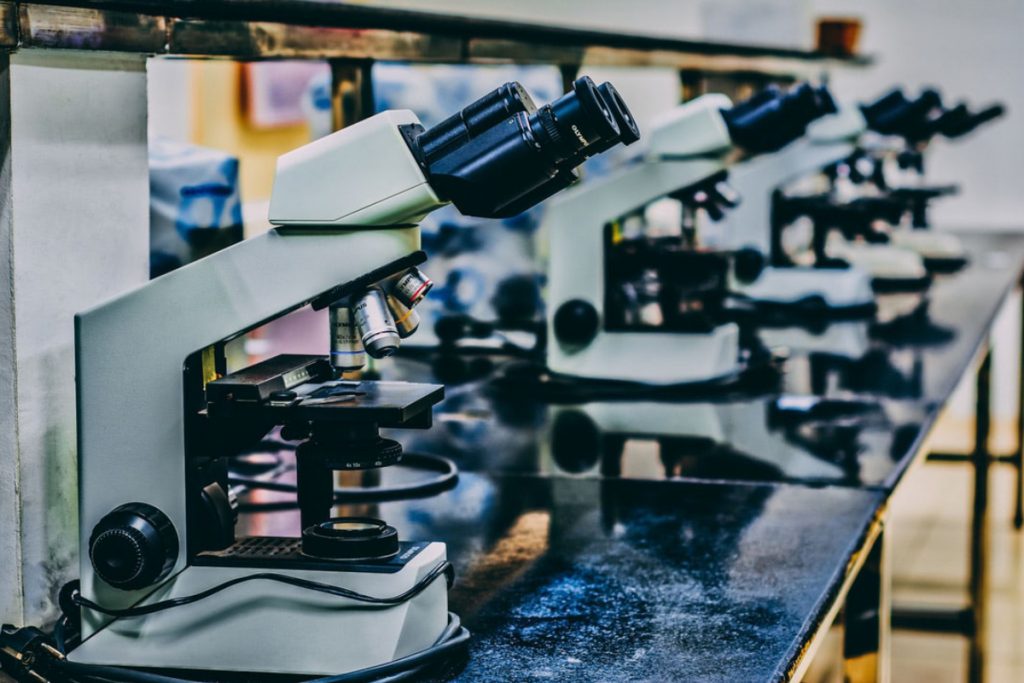Guest post by Abha Ahuja, Assistant Professor of Natural Sciences at Minerva Schools at KGI.
As on-campus meetings for laboratory courses are canceled, you might be wondering if you’ll be able to meet your goals in a virtual environment. It will take some adjustment, but it is doable if you are strategic about what you want your students to learn and why. Begin by asking yourself, “What was the goal of the lab session and lab course?” Typically, lab courses allow students to gain some exposure to specific techniques and instrumentation. Ultimately, however, the larger purpose of labs is to allow students to apply the process of science and develop scientific reasoning skills. With this new framing, here are three approaches that allow students to conduct authentic research (without setting foot in the lab!).
Do a structured analysis of primary literature: Engaging with primary literature promotes the development of data interpretation skills and allows students to see how specific techniques fit into their scientific discipline. However, left to their own devices, novices get overwhelmed by jargon and technical details (Lie et al. 2016) and lose the forest for the trees. Therefore, it is important to structure this task and guide students’ reading to clarify critical concepts and emphasize aspects most relevant to your course goals and learning outcomes.
- Write a custom reading guide including an explanation of why you selected a particular article and how it links to the course. Design study questions that require students to articulate the big question and specific hypotheses, key features of the study design, and how specific results relate to the authors’ conclusion. In this annotated sample custom reading guide, I illustrate a flipped-classroom approach.
- Primers in Genetics from the Genetic Society of America are a fantastic resource to support the use of peer-reviewed articles in college classrooms. Use these primers to write your reading guides or as supplementary resources for students.
- CREATE is a peer-reviewed, evidence-based strategy for intensive analysis of Primary Literature. A CREATE module consists of four articles, published from the same lab. You can task students to read and analyze these articles sequentially, and there are several ready-to-use modules and roadmaps on a variety of topics available.
Analyze real-world data sets: Ask students to analyze and visualize real-world data, then interpret and contextualize their findings. This will allow them to practice and improve their data analysis and quantitative reasoning skills. Moreover, compared to cook-book labs, using authentic data is more interesting and engaging for students (Kjelvik & Schultheis 2019). Try these freely available data sources that include advice on implementation and execution:
Write mock grant proposals: Research proposals require students to synthesize and critique primary literature, think creatively about open questions in a line of inquiry, and design studies to test their ideas. Best practices for such assignments include scaffolding the grant writing process with multiple staggered deadlines, sharing rubrics and evaluation criteria, and integrating opportunities for feedback and deliberate practice. The articles below contain several useful resources including grading rubrics and template assignment directions.
- “Thinking like a neuroscientist”: Using scaffolded grant proposals to foster scientific thinking in a freshman neuroscience course
- The use of mock NSF-type grant proposals and blind peer review as the capstone assignment in upper-level neurobiology and cell biology courses
To make class time feel engaging, ask students to prepare parts of the assignment tasks in advance and spend class time having students work in small groups to improve and iterate on their work. Peer instruction will help students learn from each other and give them a valuable opportunity to connect, which is especially important if they are all suddenly remote. For instance, you might follow up on grant proposals with a mock grant panel in class. Each of these strategies can also be adapted to asynchronous classes; Instructors could spread assignment tasks over several weeks, and students would use collaborative document editing tools (such as Google Documents) to exchange feedback asynchronously. Collaboration is an essential part of the scientific process; this just might be an opportunity to teach students more than they could have learned in a traditional lab.
Bibliography
Bringing authentic research and data into K-16 classrooms. (n.d.). Retrieved from http://datanuggets.org/
Bioinformatics. (n.d.). Retrieved from https://www.coursesource.org/courses/search/c/bioinformatics
Hoskins, S. G., Stevens, L. M., & Nehm, R. H. (2007). Selective Use of the Primary Literature Transforms the Classroom Into a Virtual Laboratory. Genetics, 176(3), 1381–1389. doi: 10.1534/genetics.107.071183
Itagaki H. (2013). The Use of Mock NSF-type Grant Proposals and Blind Peer Review as the Capstone Assignment in Upper-Level Neurobiology and Cell Biology Courses. Journal of undergraduate neuroscience education : JUNE : a publication of FUN, Faculty for Undergraduate Neuroscience, 12(1), A75–A84.
Kjelvik, M. K., & Schultheis, E. H. (2019). Getting Messy with Authentic Data: Exploring the Potential of Using Data from Scientific Research to Support Student Data Literacy. CBE—Life Sciences Education, 18(2). doi: 10.1187/cbe.18-02-0023
Köver, H., Wirt, S. E., Owens, M. T., & Dosmann, A. J. (2014). “Thinking like a Neuroscientist”: Using Scaffolded Grant Proposals to Foster Scientific Thinking in a Freshman Neuroscience Course. Journal of undergraduate neuroscience education: JUNE: a publication of FUN, Faculty for Undergraduate Neuroscience, 13(1), A29–A40.
Lie, R., Abdullah, C., He, W., & Tour, E. (2016). Perceived Challenges in Primary Literature in a Master’s Class: Effects of Experience and Instruction. CBE—Life Sciences Education, 15(4). doi: 10.1187/cbe.15-09-0198
Teaching Quantitative Biology Online. (n.d.). Retrieved from https://qubeshub.org/community/groups/quant_bio_online/resources
About the Author
Abha Ahuja is an Assistant Professor of Natural Sciences at Minerva Schools at Keck Graduate Institute, where she teaches in a virtual classroom using active learning pedagogy. If you want to learn more about teaching life sciences via active learning online email me at abha@minerva.kgi.edu.













